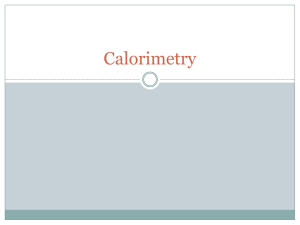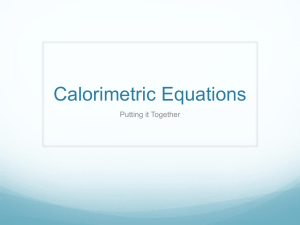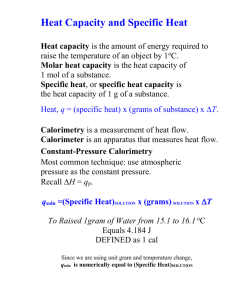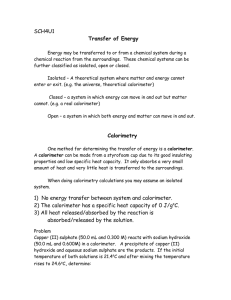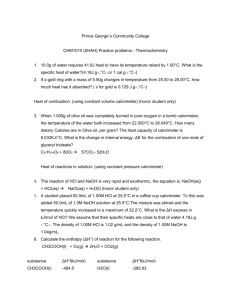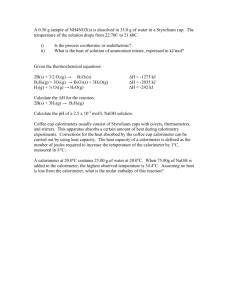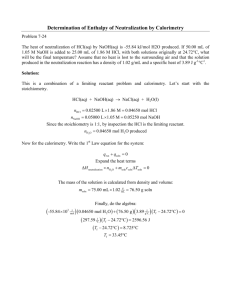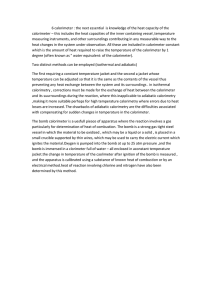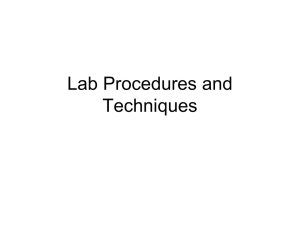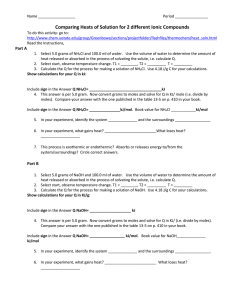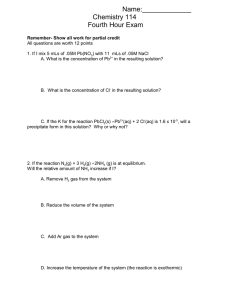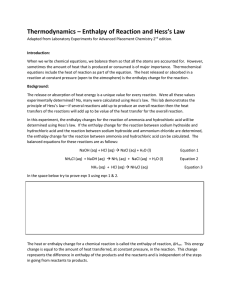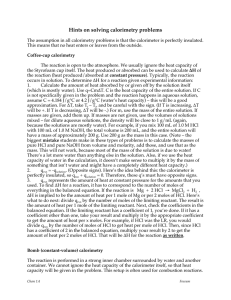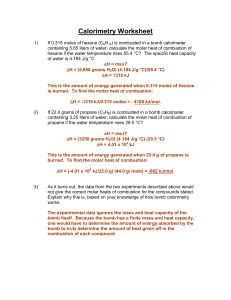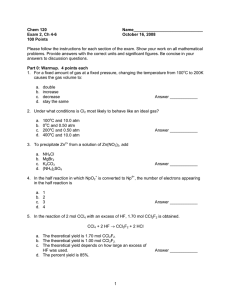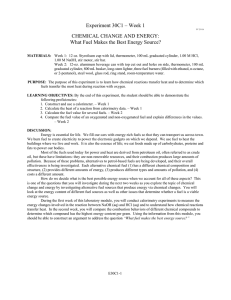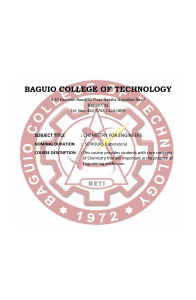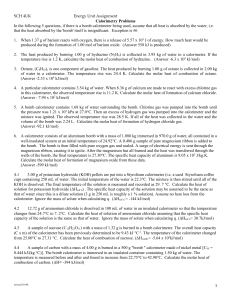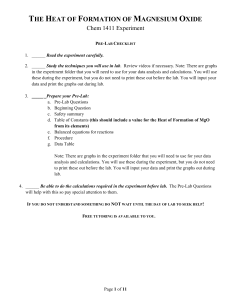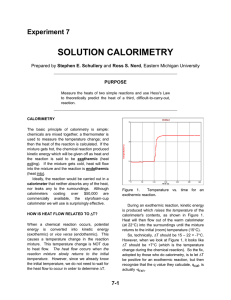Document 10287915
advertisement
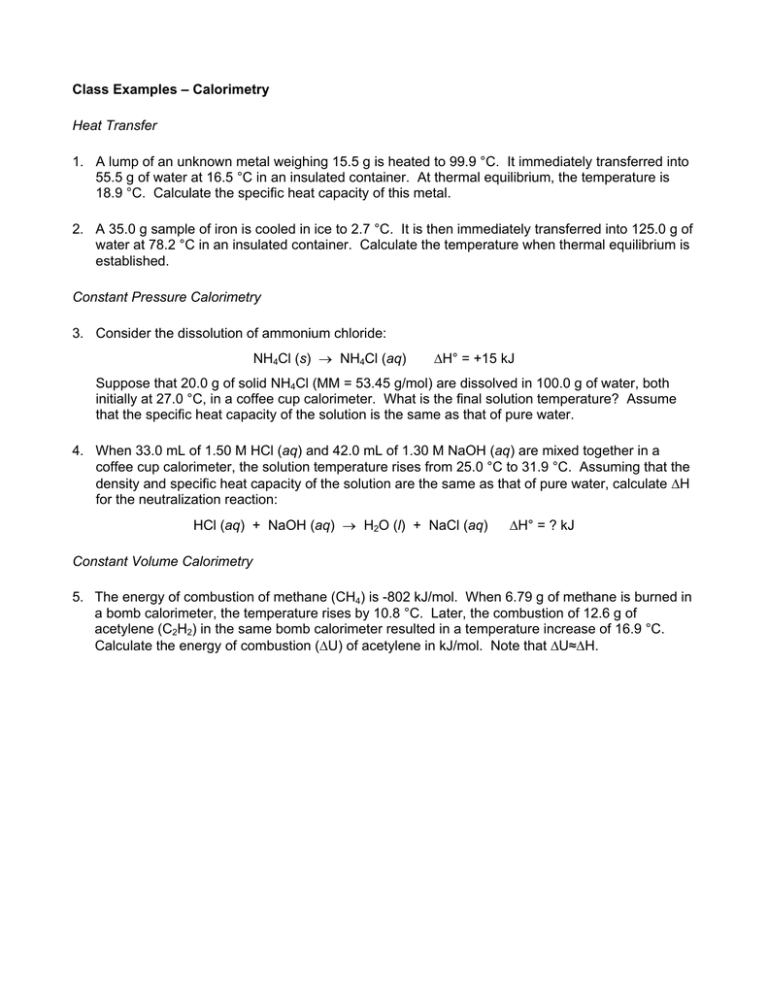
Class Examples – Calorimetry Heat Transfer 1. A lump of an unknown metal weighing 15.5 g is heated to 99.9 °C. It immediately transferred into 55.5 g of water at 16.5 °C in an insulated container. At thermal equilibrium, the temperature is 18.9 °C. Calculate the specific heat capacity of this metal. 2. A 35.0 g sample of iron is cooled in ice to 2.7 °C. It is then immediately transferred into 125.0 g of water at 78.2 °C in an insulated container. Calculate the temperature when thermal equilibrium is established. Constant Pressure Calorimetry 3. Consider the dissolution of ammonium chloride: NH4Cl (s) NH4Cl (aq) H° = +15 kJ Suppose that 20.0 g of solid NH4Cl (MM = 53.45 g/mol) are dissolved in 100.0 g of water, both initially at 27.0 °C, in a coffee cup calorimeter. What is the final solution temperature? Assume that the specific heat capacity of the solution is the same as that of pure water. 4. When 33.0 mL of 1.50 M HCl (aq) and 42.0 mL of 1.30 M NaOH (aq) are mixed together in a coffee cup calorimeter, the solution temperature rises from 25.0 °C to 31.9 °C. Assuming that the density and specific heat capacity of the solution are the same as that of pure water, calculate H for the neutralization reaction: HCl (aq) + NaOH (aq) H2O (l) + NaCl (aq) H° = ? kJ Constant Volume Calorimetry 5. The energy of combustion of methane (CH4) is -802 kJ/mol. When 6.79 g of methane is burned in a bomb calorimeter, the temperature rises by 10.8 °C. Later, the combustion of 12.6 g of acetylene (C2H2) in the same bomb calorimeter resulted in a temperature increase of 16.9 °C. Calculate the energy of combustion (U) of acetylene in kJ/mol. Note that U≈H.


